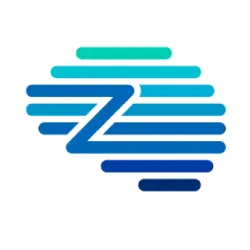As public sector organizations strive for greater transparency, accountability, and cost-effectiveness, open tendering has emerged as a cornerstone of modern procurement strategy. By opening up bidding to all qualified suppliers, this process not only promotes fairness and equal opportunity but also helps procurement officers secure the best value for their investments. In a landscape shaped by rapid digitization, evolving regulations, and increasing stakeholder scrutiny, understanding and optimizing open tendering is more important than ever. This guide explores every facet of open tendering—from legal frameworks and process steps to risk management and post-award strategies—equipping procurement professionals with the knowledge to succeed.
TL;DR
- Open tendering ensures transparent, competitive procurement, allowing all qualified suppliers to participate.
- It fosters better pricing, innovation, and inclusivity—particularly for SMEs and new vendors.
- Challenges include administrative burden, longer timelines, and quality control, all of which can be mitigated with planning and automation.
- Legal frameworks like the Procurement Act 2023 and OCDS mandate fairness and auditability in public procurement.
- Zycus’ Merlin Agentic platform helps streamline and automate open tendering, ensuring compliance and performance monitoring.
What is Open Tendering in Procurement
Open tendering is a procurement process where bids are invited from all interested suppliers, ensuring transparency, competition, and equal opportunity. It is the most democratic and accessible method used in public procurement. By adhering to open tendering, procurement officers can ensure fairness, improve quality through competition, and receive the best value for money.
The steps in open tendering include:
- Tender Notice: A public announcement that a procurement opportunity is available. It includes project details, eligibility criteria, submission deadlines, and evaluation procedures.
- Bid Submission: Suppliers prepare and submit their proposals by the stated deadline.
- Bid Opening and Evaluation: All submitted bids are reviewed based on predefined criteria.
- Award Decision: The contract is awarded to the supplier who best meets the requirements.
- Contract Finalization: Legal agreements are signed, and procurement begins.
Legal compliance is crucial in open tendering. Regulations such as the Procurement Act 2023 and standards like the Open Contracting Data Standard (OCDS) enforce public advertisement, non-negotiable awards, and transparent reporting.
Download Whitepaper: Master the UK Procurement Act 2023: Ensure Compliance & Drive Procurement Excellence
Benefits and Challenges of Open Tendering
Open tendering offers numerous benefits. It ensures:
- Transparency: Every step is open to public scrutiny, reducing corruption.
- Competition: Encourages participation from a wide supplier base.
- Value for Money: Competitive pricing and innovation flourish in open environments.
- Diversity and Inclusion: Levels the playing field for small businesses and minority-owned enterprises.
However, it also presents challenges:
- Administrative Overload: Reviewing a high volume of bids is a resource-intensive task.
- Time Constraints: Long timelines for evaluation and contract finalization.
- Quality Control: Managing a broad pool of bidders may dilute quality unless stringent evaluation is applied.
To mitigate these, organizations must implement robust project planning, automated bid management tools, and standardized evaluation frameworks.
Listen to Podcast: Compliance Lag in Procurement: The Silent Threat to Tariff Agility
Legal Framework and Compliance in Open Tendering
The legal structure governing open tendering mandates:
- Open Advertisement: All opportunities must be published on accessible platforms.
- Defined Evaluation Criteria: Assessment standards must be predetermined and disclosed.
- Audit Trails: Every action must be documented to support accountability.
Laws such as the Procurement Act 2023 and Freedom of Information Acts in various jurisdictions underscore the importance of transparency. Compliance is not just about adhering to rules; it’s about fostering public trust.
Many international organizations and governments are adopting open data standards like OCDS, ensuring that every stage from planning to implementation is trackable and transparent. This reduces the risk of corruption and enhances efficiency in spending public money.
Download Whitepaper: Driving Compliance – Persistent Issue for Procurement Organizations
Steps in the Open Tendering Process
Preparation of Tender Documentation: Includes project description, terms, eligibility requirements, submission guidelines.
- Publishing the Tender Notice: Shared through official portals, newspapers, and procurement bulletins.
- Receiving Bids: A secure process where bids are logged and stored until opening.
- Bid Evaluation: Based on cost, technical capability, experience, and delivery timelines.
- Awarding the Contract: Issued to the highest-scoring compliant bid.
- Debriefing and Dispute Resolution: Losing bidders may request feedback; a formal process handles grievances.
Each of these steps plays a critical role in ensuring a successful procurement. The process must be managed with fairness and transparency at every stage to maintain credibility and encourage supplier participation.
Evaluating Tenders and Selecting Suppliers
Evaluating tenders involves:
- Technical Evaluation: Compliance with technical specs and methodologies.
- Financial Evaluation: Competitive pricing without compromising quality.
- Risk Assessment: Supplier capacity, financial health, and past performance.
- Scoring Mechanism: Predefined scorecards to ensure impartial evaluation.
Best practices in evaluation include:
- Conducting evaluations with multi-disciplinary panels to ensure objectivity.
- Establishing clear scoring rubrics and weightages.
- Maintaining confidentiality of the bids during evaluation.
Supplier selection prioritizes reliability, compliance, and long-term value. It is crucial to document the entire process meticulously to defend against disputes or audits.
Contract Management Post-Tendering
Once a supplier is selected, the focus shifts to contract management:
- Performance Monitoring: Using KPIs to track deliverables and timelines.
- Change Management: Procedures for handling scope changes or extensions.
- Documentation: Maintaining comprehensive records of communications, changes, and payments.
- Renewals and Termination: Planning for contract extensions or structured exit plans.
Effective contract management ensures the procurement’s strategic goals are met, mitigates risks, and strengthens supplier relationships. Leveraging digital tools and centralized contract repositories enhances visibility and compliance.
Risk Assessment and Mitigation in Open Tendering
Risks in open tendering include:
- Bid Rigging: Collusion among bidders.
- Non-performance: Supplier fails to meet commitments.
- Legal Challenges: Disputes over fairness or evaluation.
Mitigation strategies involve:
- Prequalification Rounds: Screening suppliers before bid invitation.
- Conflict of Interest Declarations: Ensuring impartiality.
- Audit and Review Mechanisms: Ongoing process assessments.
- Training and Automation: Building internal capabilities and using digital tools.
Risk mitigation should be embedded in every stage of the procurement lifecycle. Technology can play a key role in identifying red flags early and ensuring compliance with policy and regulation.
Solving Procurement Officers’ Key Pain Points with Open Tendering
Procurement officers often face challenges in managing compliance, reducing costs, and achieving timely, transparent sourcing. Open tendering offers a robust solution to these issues when backed by the right technology.
Zycus’ Source-to-Contract Suite, including tools like eSourcing, Contract Lifecycle Management, and Supplier Management, helps organizations streamline open tendering. With AI-driven insights from Merlin Agentic, procurement teams can:
- Automate tender creation and evaluation workflows
- Ensure regulatory compliance across geographies
- Increase supplier participation with intuitive interfaces
- Analyze supplier performance and risk in real-time
To explore how Zycus can help modernize your open tendering process, Request a Demo today.
FAQs
Q1. What is open tendering?
Open tendering is a procurement method that invites all interested and qualified suppliers to submit bids for a project. It is used primarily in the public sector to promote transparency, fairness, and competition.
Q2. What are the key benefits of open tendering?
- Greater transparency and public accountability
- Competitive pricing and improved quality
- Equal opportunity for suppliers
- Reduced corruption and favoritism
Q3. How is open tendering different from selective or closed tendering?
- Open tendering allows all qualified suppliers to participate.
- Selective tendering limits bids to a prequalified list of suppliers.
- Closed tendering is invitation-only, often used for specialized or urgent projects.
Q4. What are the common challenges in implementing open tendering?
- High volume of bid submissions
- Longer procurement timelines
- Risk of low-quality or non-compliant bids
- Administrative and resource burdens
Q5. What legal frameworks govern open tendering?
In many countries, laws such as the Procurement Act 2023, UNCITRAL Model Law, and Open Contracting Data Standards (OCDS) provide the regulatory foundation for open tendering practices.
Q6. What are the typical steps in the open tendering process?
- Tender notice publication
- Bid submission
- Bid opening and evaluation
- Award decision
- Contract finalization
Q7. How are suppliers evaluated in open tendering?
Evaluation is typically based on a combination of:
- Price competitiveness
- Technical compliance
- Supplier experience and past performance
- Delivery timelines and service capability
Q8. How can organizations reduce the risks associated with open tendering?
- Use prequalification rounds
- Apply structured evaluation scorecards
- Implement digital procurement platforms
- Train evaluation committees in compliance and risk management
Q9. What role does technology play in improving open tendering?
Digital platforms like Zycus’ Merlin Agentic automate tender publishing, bid collection, evaluation, and compliance checks—reducing errors, saving time, and enhancing transparency.
Q10. How can I get started with Zycus’ open tendering solutions?
Zycus offers a complete Source-to-Pay suite including open tendering automation. You can Request a Demo to see how it can improve your procurement efficiency and compliance.
Related Reads:
- Guide to Public Procurement: Strategies, Compliance & Digital Transformation
- Mastering the UK’s New Public Procurement Act: 6 Essential Strategies
- Video: Elevate Gov Procurement with Zycus Solutions
- Transforming Public Procurement: UK Procurement Act 2023 and Its 2025 Rollout
- Your Guide to eProcurement
- Whitepaper: Why Procurement Tech Fails: A CPO’s Guide to Success











































